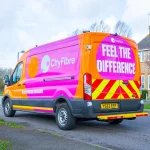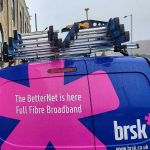All UK GPs, Hospitals and Community Care Facilities to Get Full Fibre
The Government’s Secretary of State for Health and Social Care, Matt Hancock MP, has today announced his intention to upgrade the National Health Service (NHS) with better digital connectivity, not least by ensuring that all GPs and Hospitals are connected to Gigabit capable “full fibre” connections (FTTP or leased lines).
A large number of NHS sites have already been connected to similar networks by various different ISPs, although some reports have noted that 39% of related organisations are still using slow copper lines and on top of that 80% of GP practices could soon be using outdated IT systems (here), which are not suitable for the demands of future care.
The first sign of a possible change in approach came last year after Matt Hancock MP called on Openreach (BT) to help him ensure that “every single GP” could get access to a “full fibre” broadband connection. In response the operator’s CEO, Clive Selley, is claimed to have said, “send me their addresses” (here).
Advertisement
However Openreach are not the only player in town, even though they seem likely to do most of the work, and today’s announcement makes no mention of any operator preference. Instead Matt’s speech to the Royal College of General Practitioners (RCGP) technology conference set out a broader strategy, under the NHS Long Term Plan.
Matt Hancock MP said:
“Every day, our NHS staff do amazing work – but too often they are let down by outdated and unreliable technology. It’s simply unbelievable that a third of NHS organisations are using internet that can sometimes be little better than dial-up.
To give people control over how they access NHS services, I want to unlock the full potential of technology – this is the future for our 21st century healthcare system and a central part of our NHS Long Term Plan.
Faster broadband connections can help us deliver these dramatic improvements – we need clinicians and other healthcare professionals to feel confident they can access fast, reliable broadband so they can provide patients with the best possible care.”
The funding for this looks set to come from a combination of sources, including the NHS Digital’s Health and Social Care Network (HSCN) Marketplace and the on-going Gigabit Broadband Voucher Scheme (GBVS). Similarly the forthcoming £200m Rural Gigabit Broadband Connectivity (RGBC) programme, which is expected to offer similar support to homes in rural areas, may help link up some of the more remote sites.
We’ve already seen how a related pilot under the Local Full Fibre Networks (LFFN) programme has been used to bring full fibre to 100 rural schools (here) and something similar for the NHS seems very plausible.
Under the existing plan only around 70% of NHS organisations will have full fibre connectivity using leased lines by August 2020, thus tackling the final 30% seems likely to require a longer time-scale.
Advertisement
UPDATE 2:25pm
We’ve had a comment from Openreach.
Kim Mears, OR’s MD for Strategic Infrastructure Development, said:
“Our network already connects thousands of NHS sites across the country, and we’re keen to work with the health secretary as we build future proof FTTP broadband infrastructure across the UK.
We believe our network can do even more for patients and healthcare professionals, and we’re talking to all parts of government about how to encourage greater investment in full fibre broadband.”
Mark is a professional technology writer, IT consultant and computer engineer from Dorset (England), he also founded ISPreview in 1999 and enjoys analysing the latest telecoms and broadband developments. Find me on X (Twitter), Mastodon, Facebook, BlueSky, Threads.net and Linkedin.
« SSE Enterprise Telecoms to Launch Jisc’s Janet South Fibre Network

















































Why on earth would you want to connect hospitals using broadband? Surely such important sites should be on Ethernet connections with appropriate SLAs etc and not on shared broadband links, “full fibre” or otherwise?
This is a good strategic move – it ensures full fibre will be available quicker to the public in certain cases
“Why on earth would you want to connect hospitals using broadband?”
Since when did the extremely wide definition of “broadband” require shared links? The definition is so vague that it can be applied to almost anything above dial-up and ISDN 🙂 .
Of course if you run a small community GP practice with a couple of staff and very little data traffic, then it’s fairly easy to argue against the excessive cost of dedicated leased lines. By that same virtue they wouldn’t really need full fibre either, but no complaints if that’s what the Gov now expects.
Hospitals (and many GPS) are connected to what Openreach call Ethernet (some call it leased line) fibre. A dedicated fibre connection back to the exchange with SLA. That’s what you’re talking about, and that’s what they have.
Oh you’d love how the largest private hospital network in the country handle connectivity. The NHS is I believe considering a move to similar.
It involves broadband, among other things.
@Salek – ‘it ensures full fibre will be available quicker to the public in certain cases’ How do you work that out?
This is big news for an organisation which still has over 8,000 fax machines.
The trouble with monoliths like the NHS is that IT change happens in geological time frames.
As a geek, higher speeds are always a positive, but this feels like speed for the sake of speed. Hope they take a measured approach to this.
The costs aren’t comparable, but a couple more Doctors would do my local GP practice more good than a bump from 50mbps FTTC to 330mbps.
The reality is a couple more doctors is far far more than getting fttp to an office will cost.
If eg. 30M is fine for them why is FTTP needed?
I think the NHS has far more pressing needs than FTTP, Mr Hancock. Getting staffing and bed provision to a similar level to our peers would be a good start.